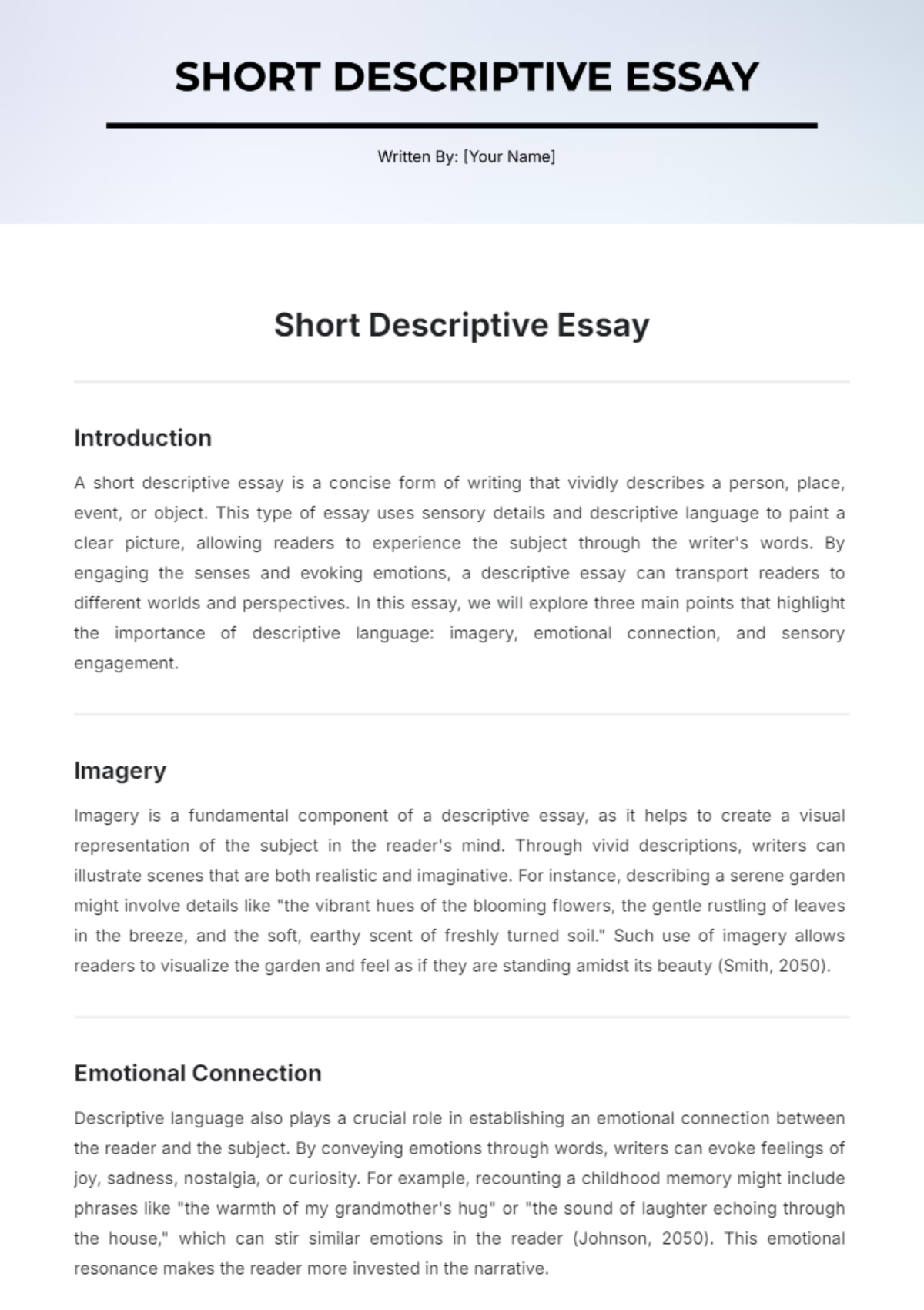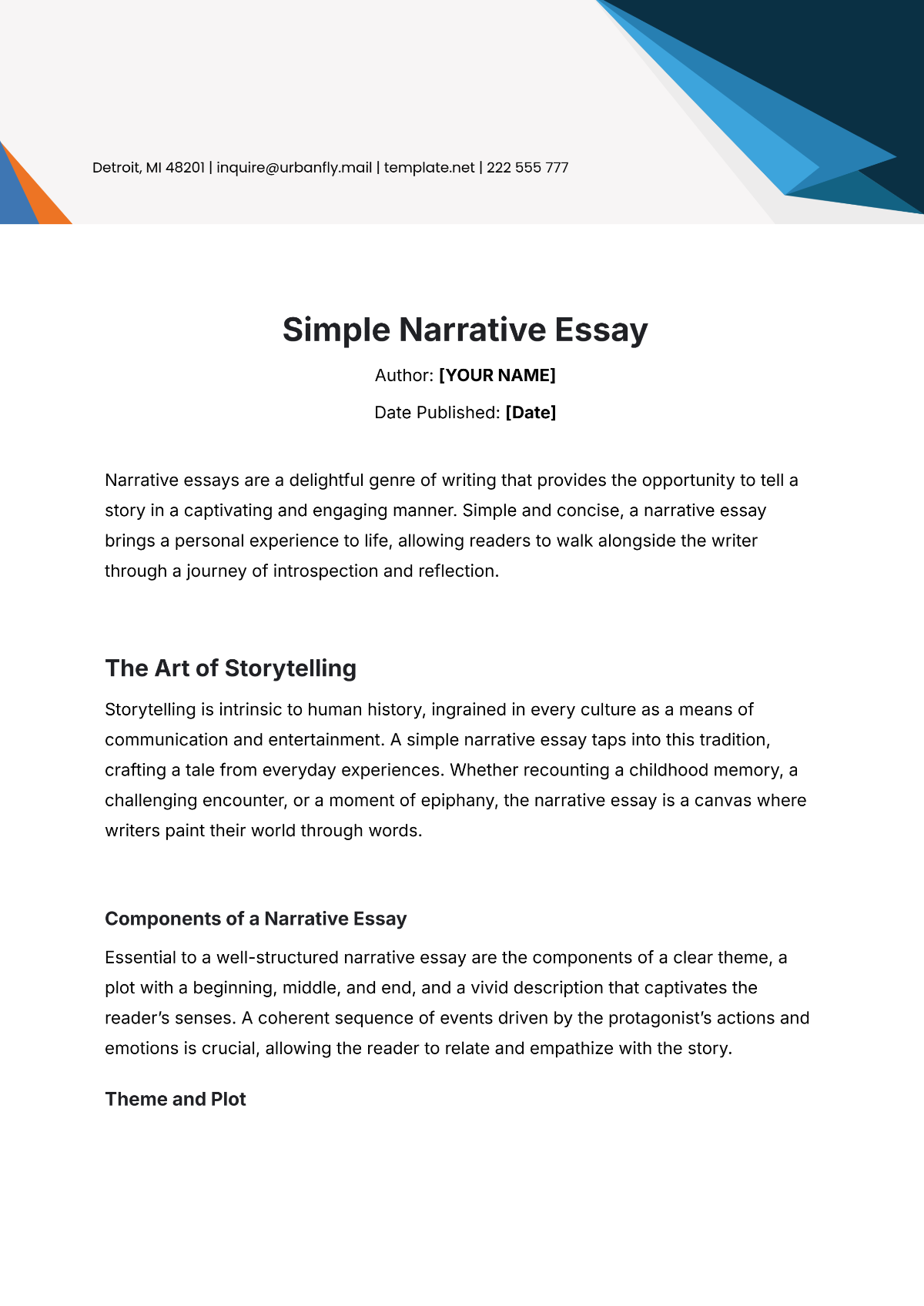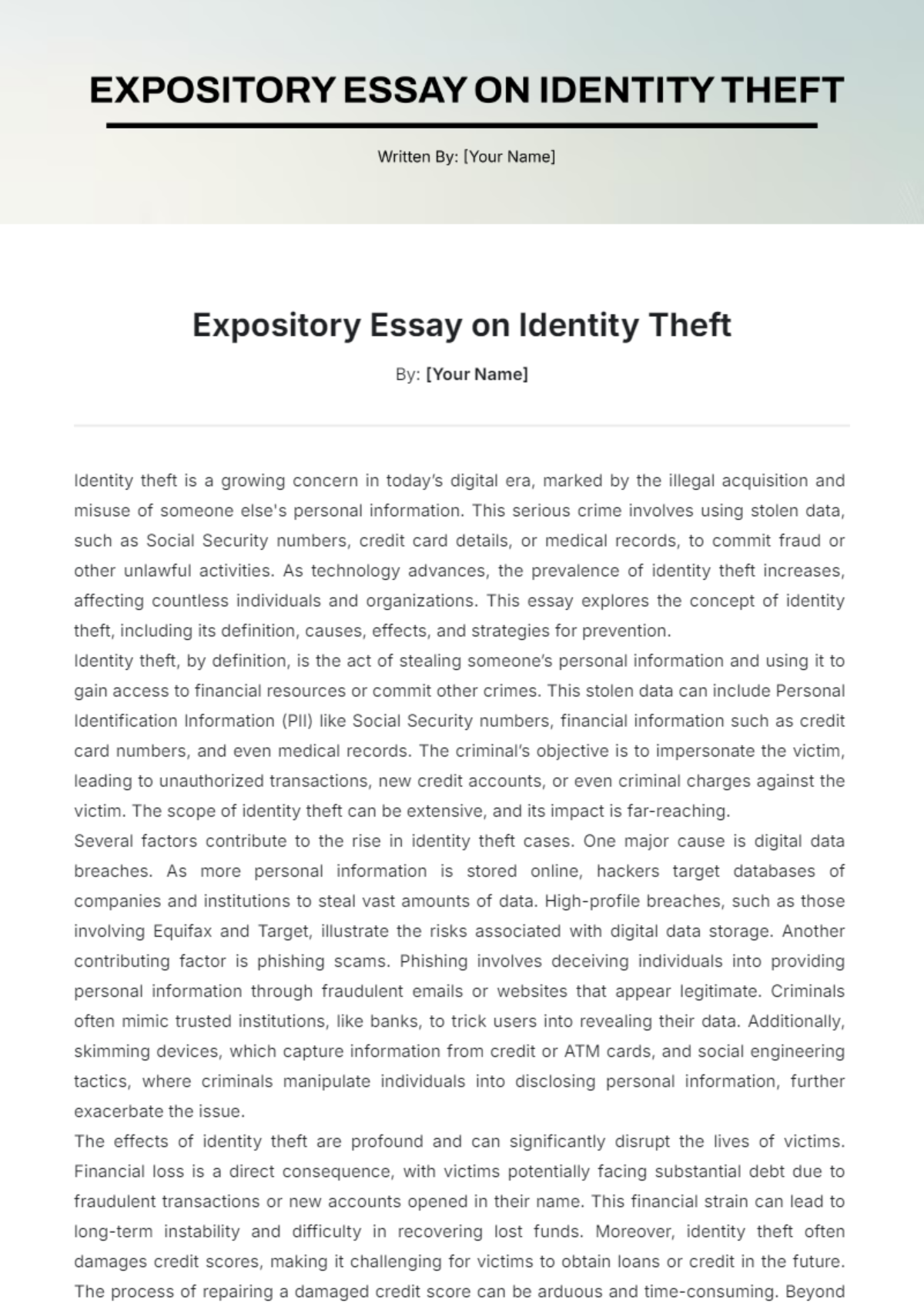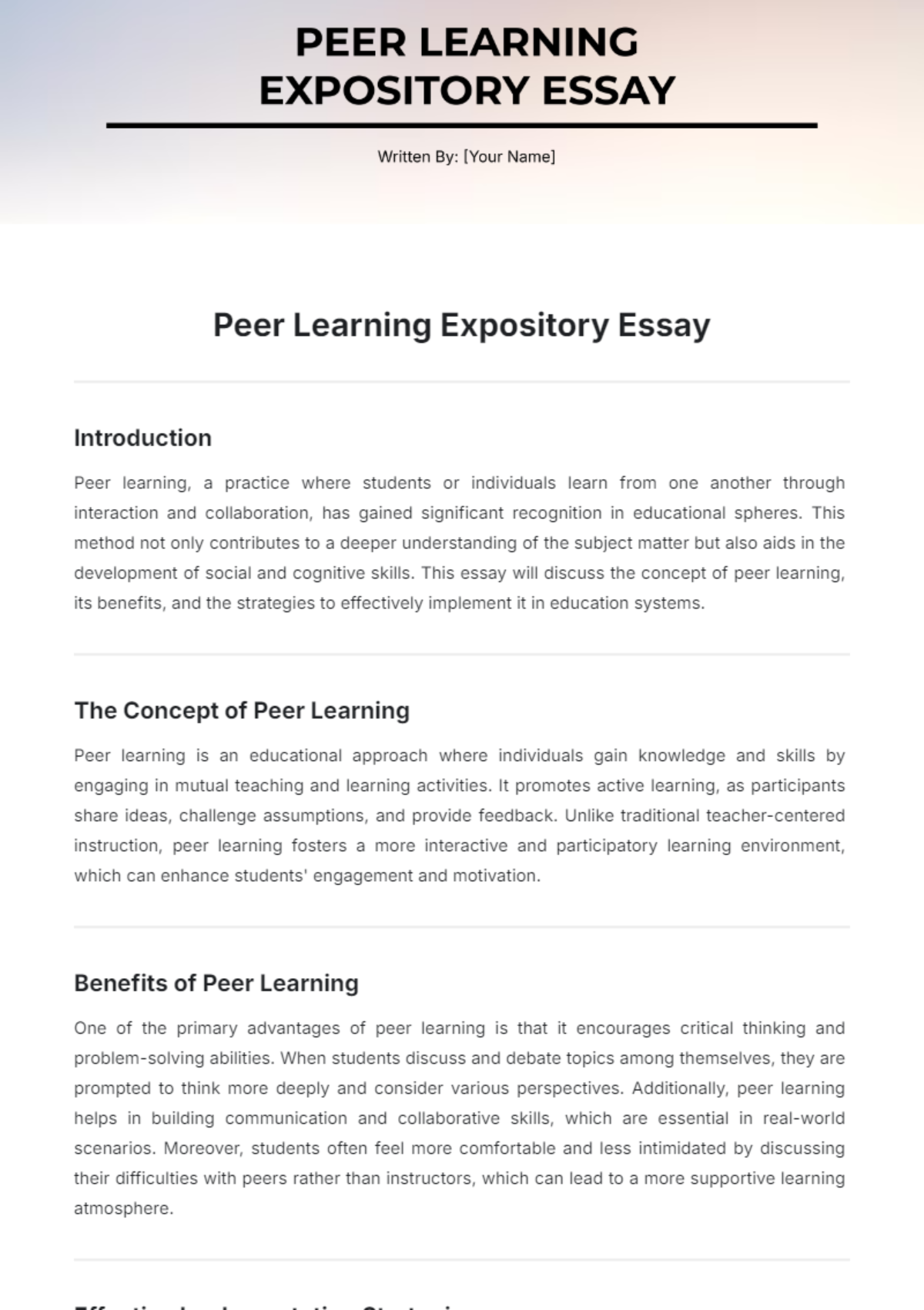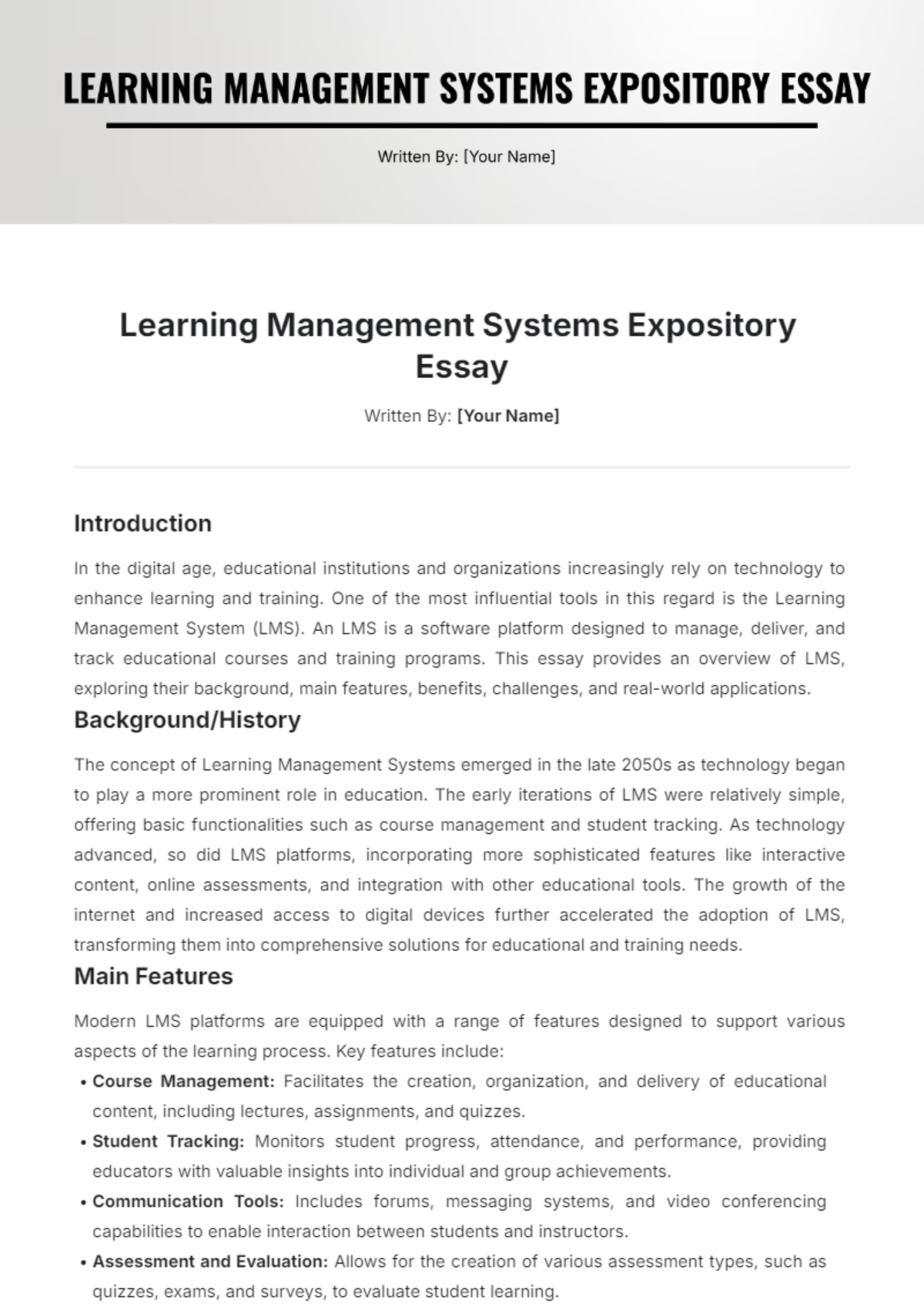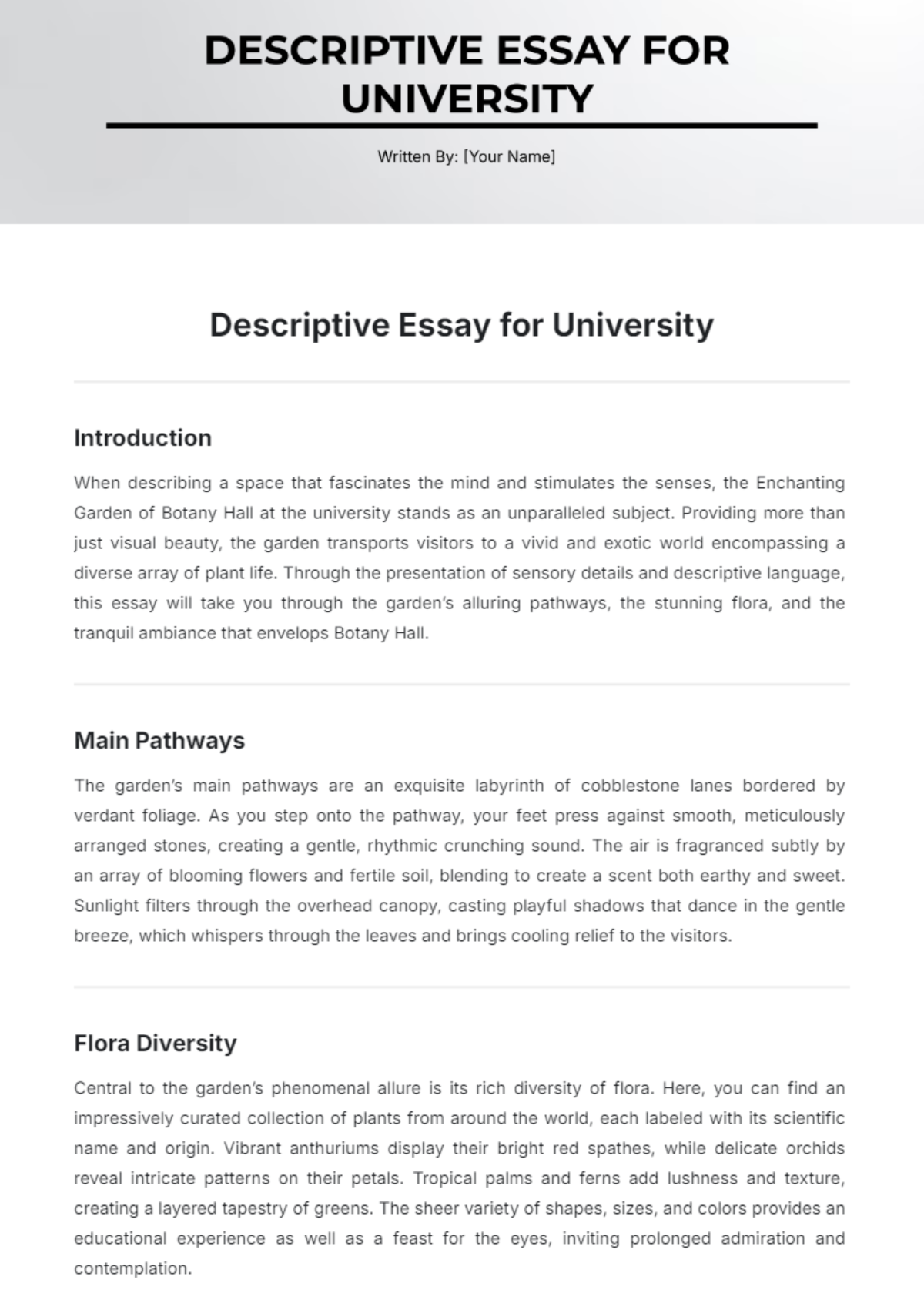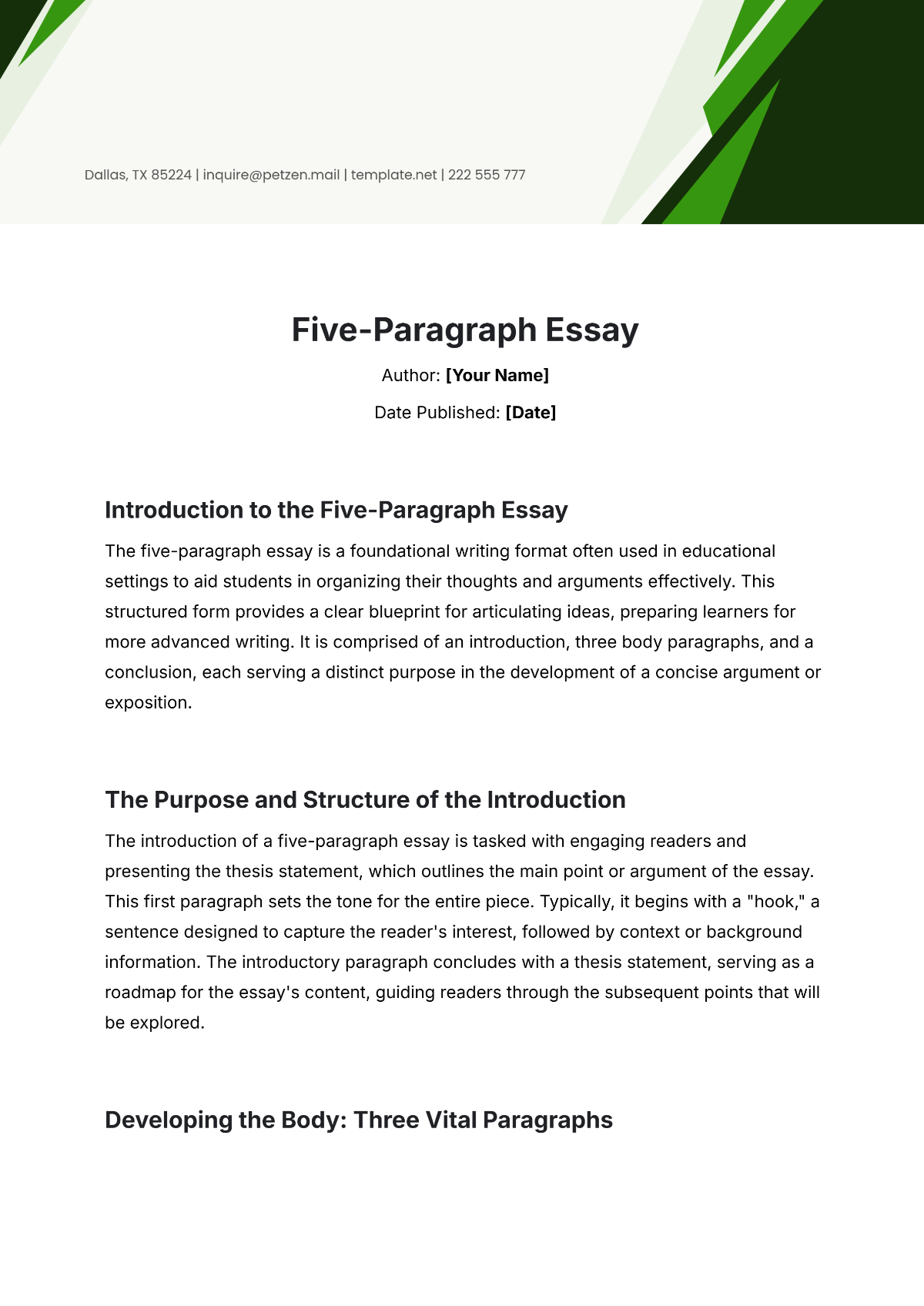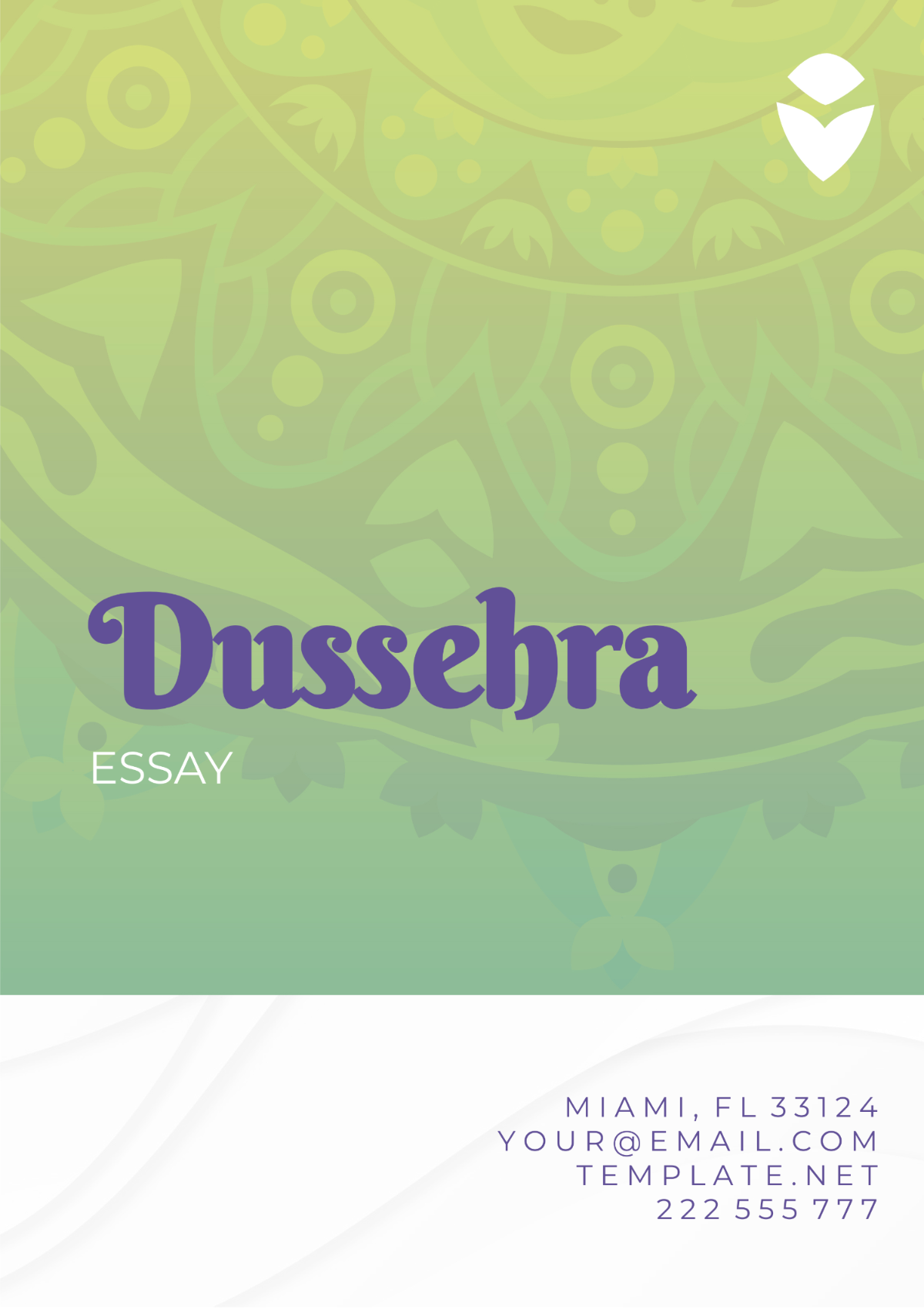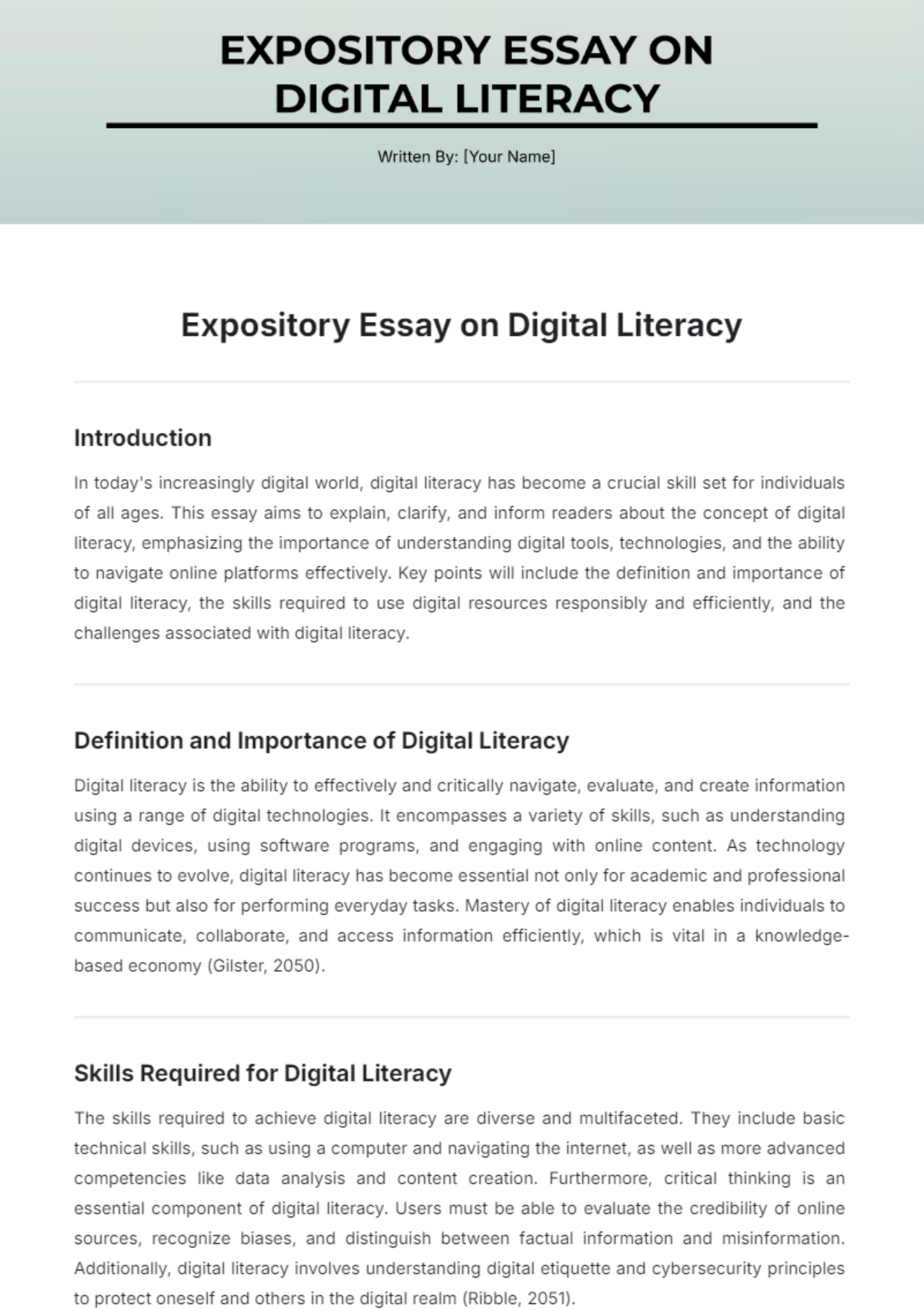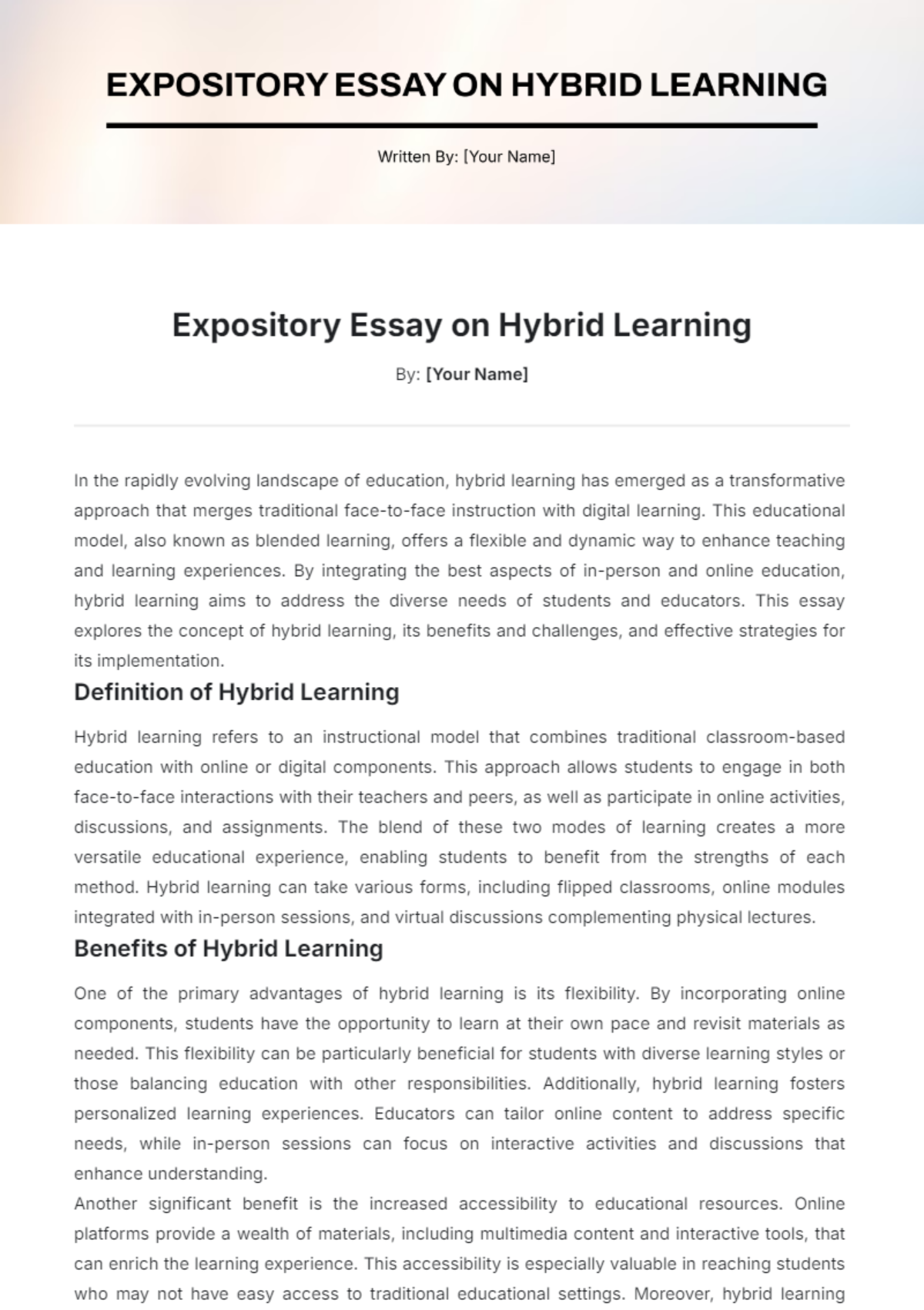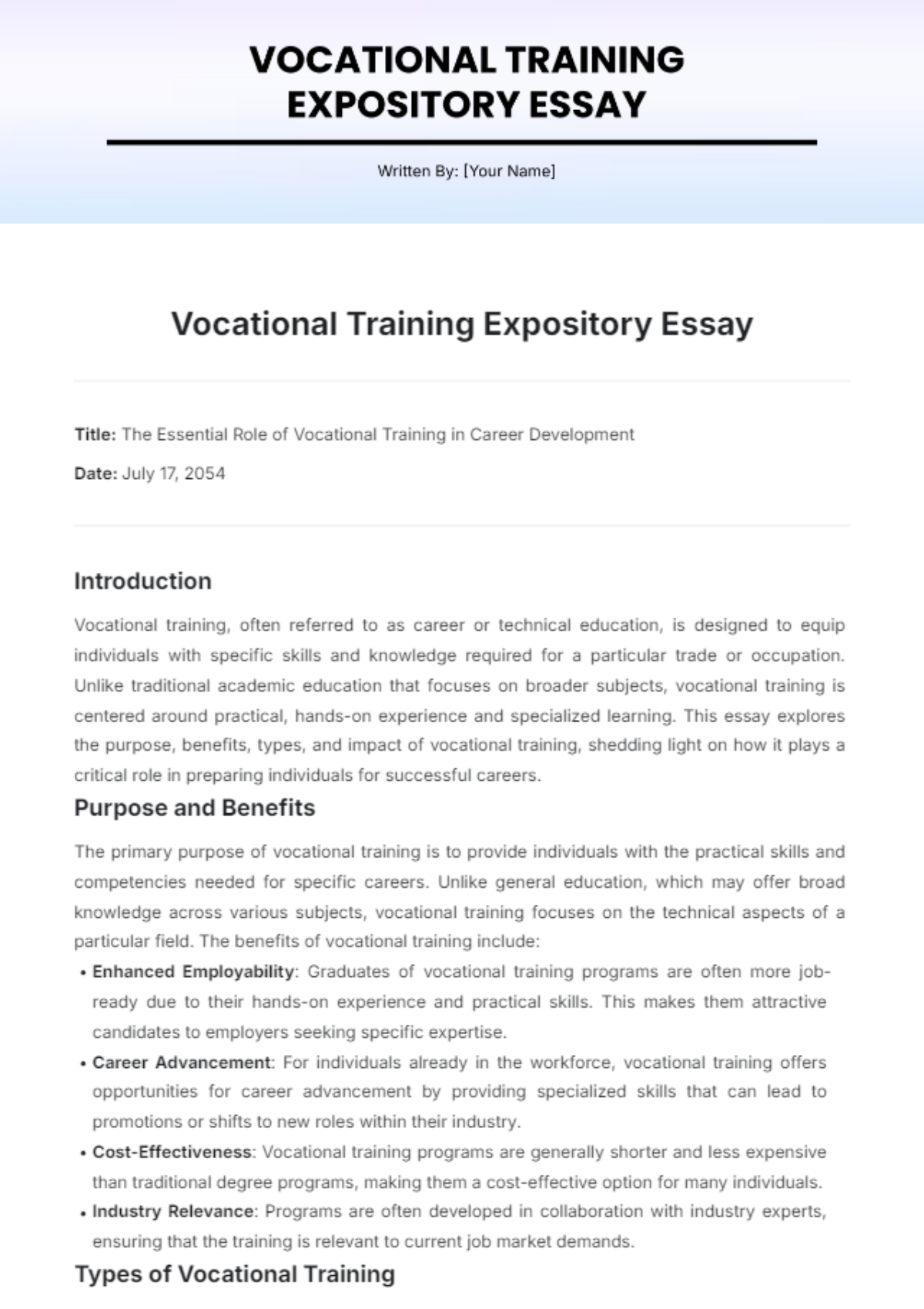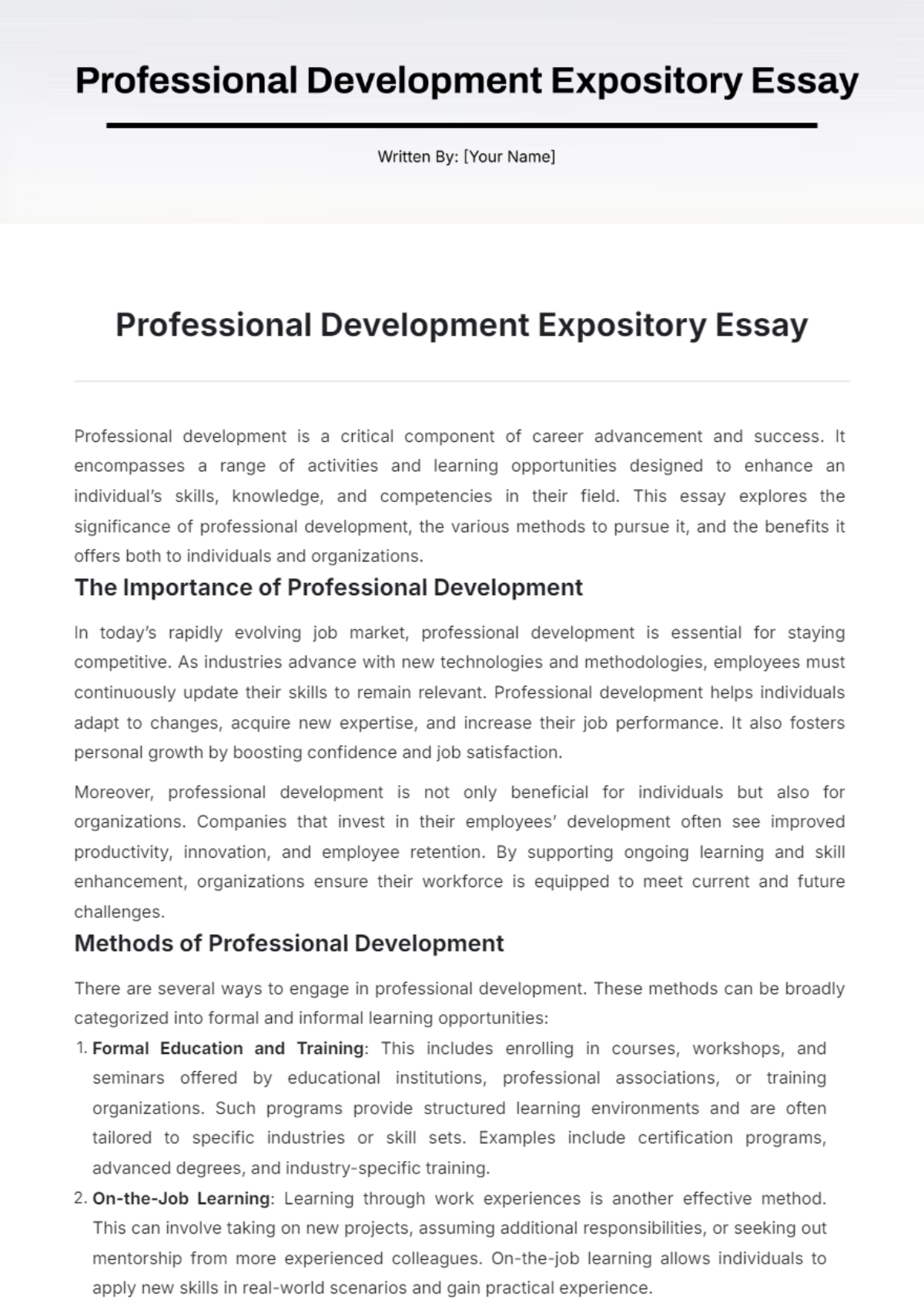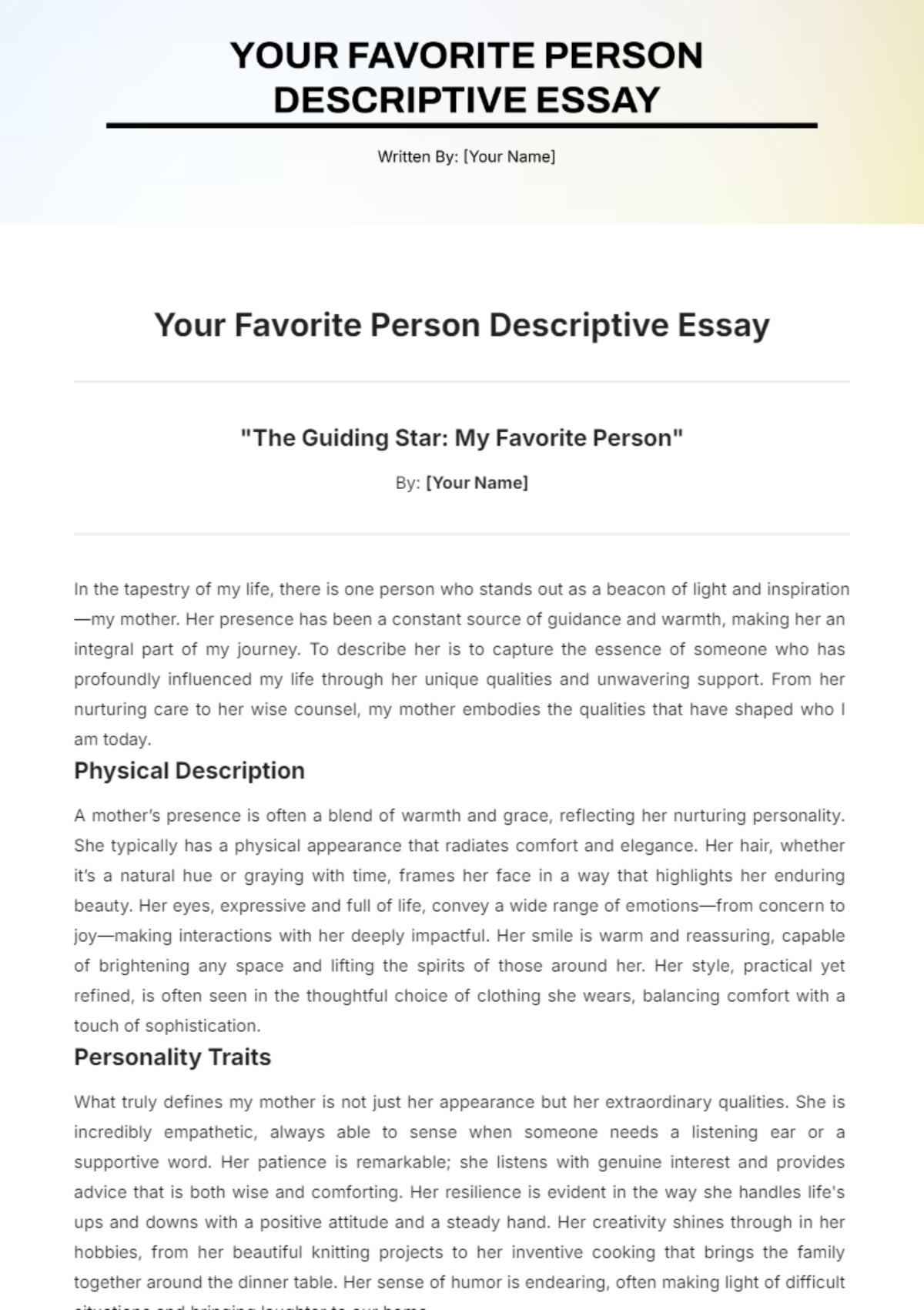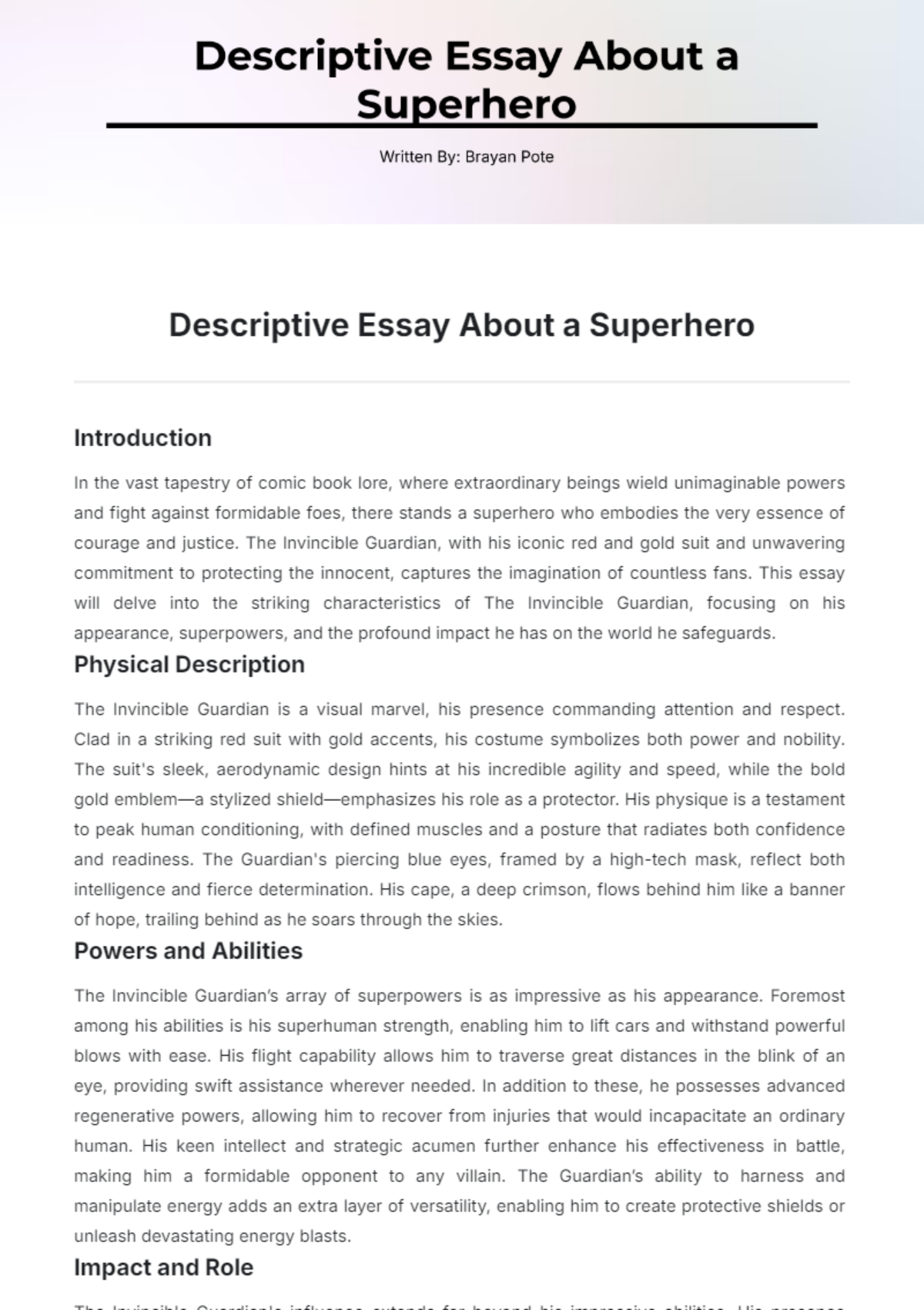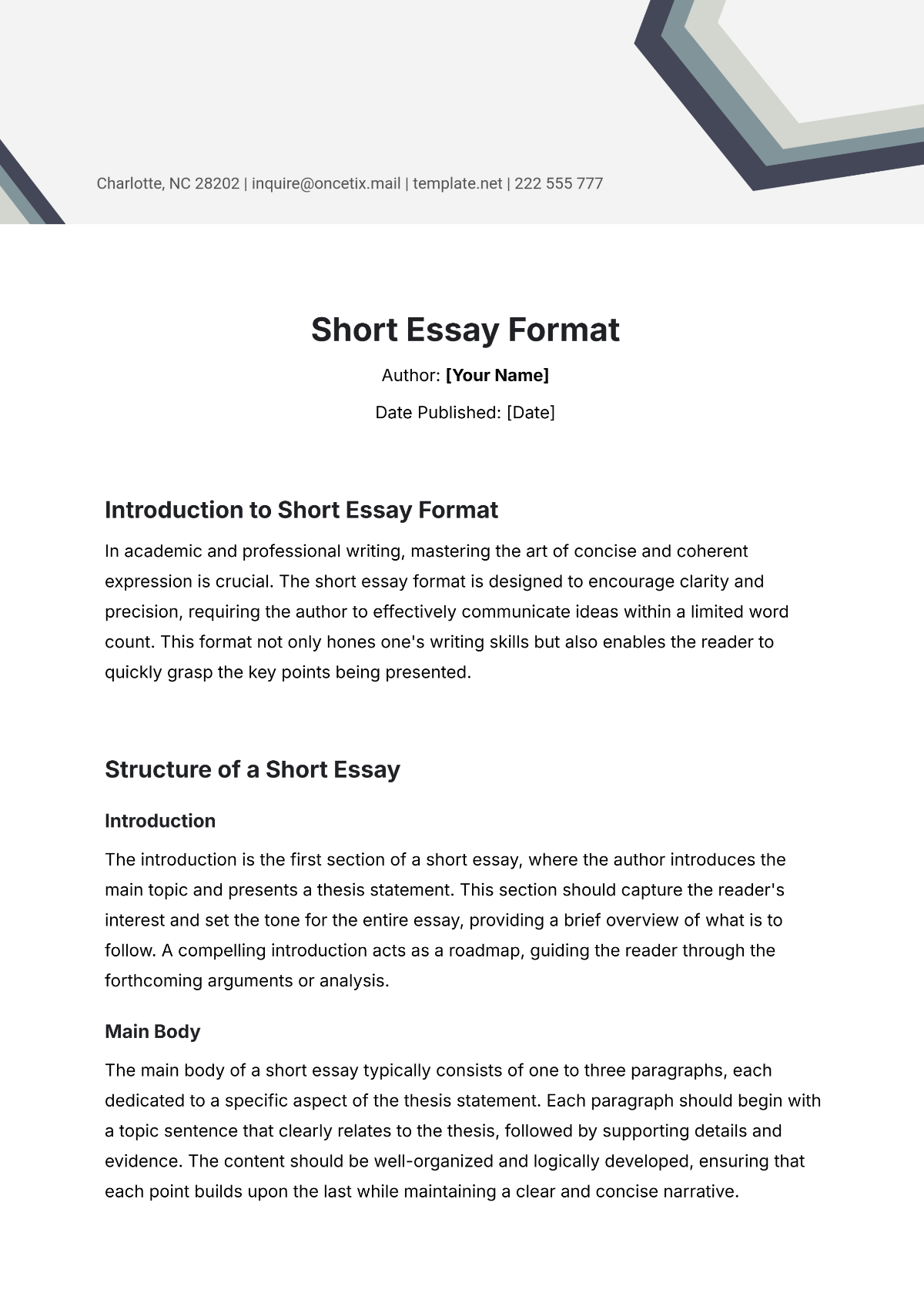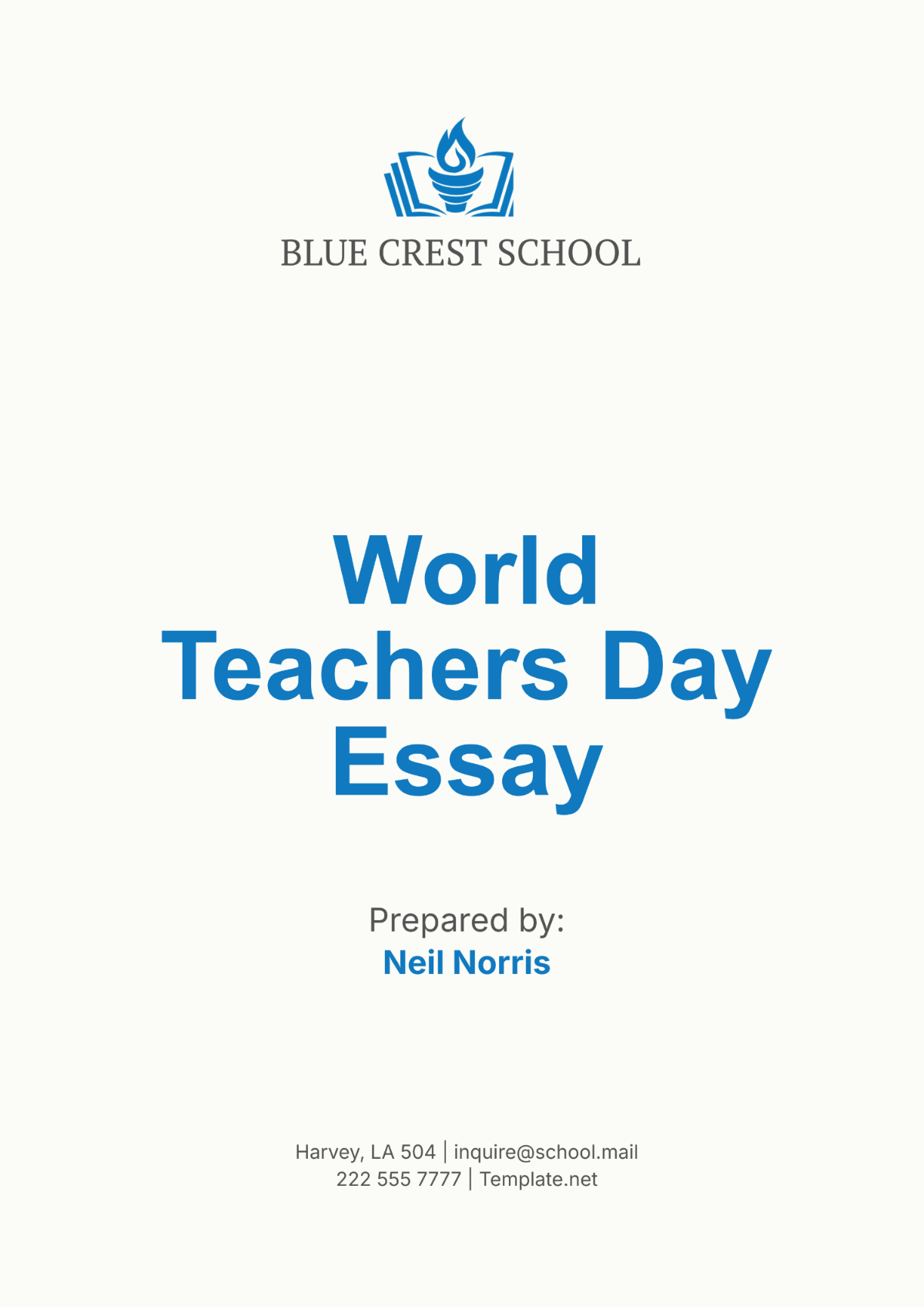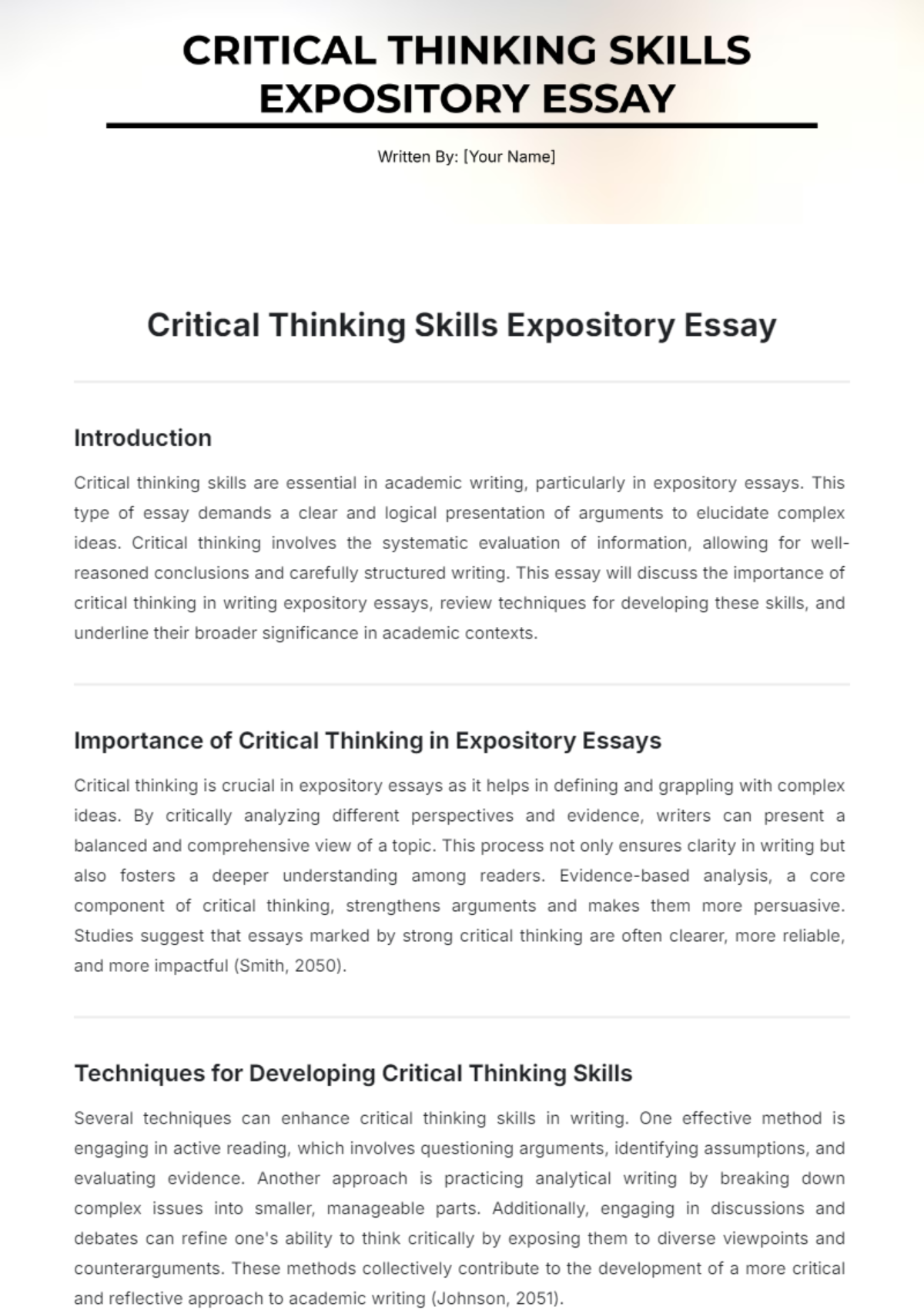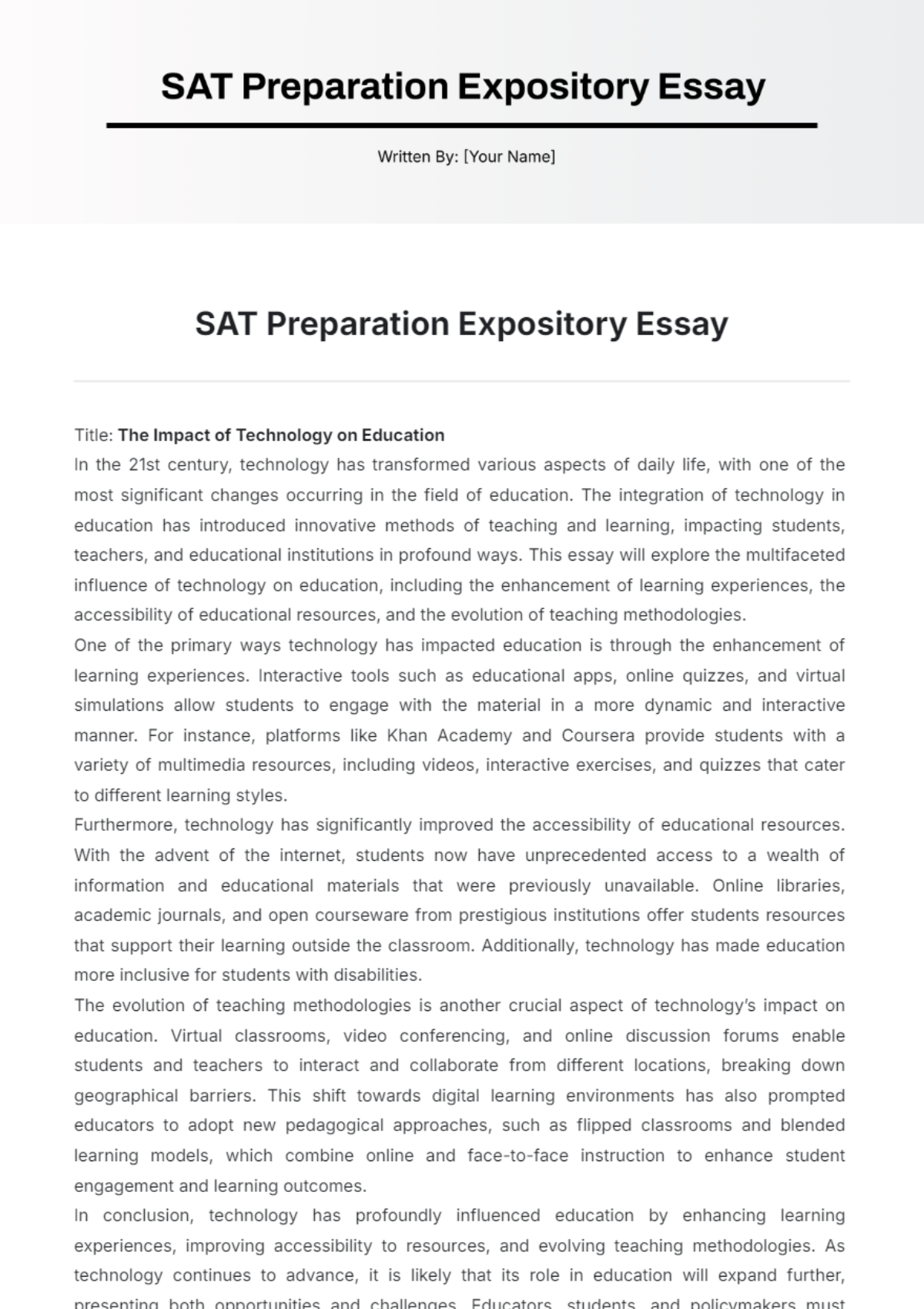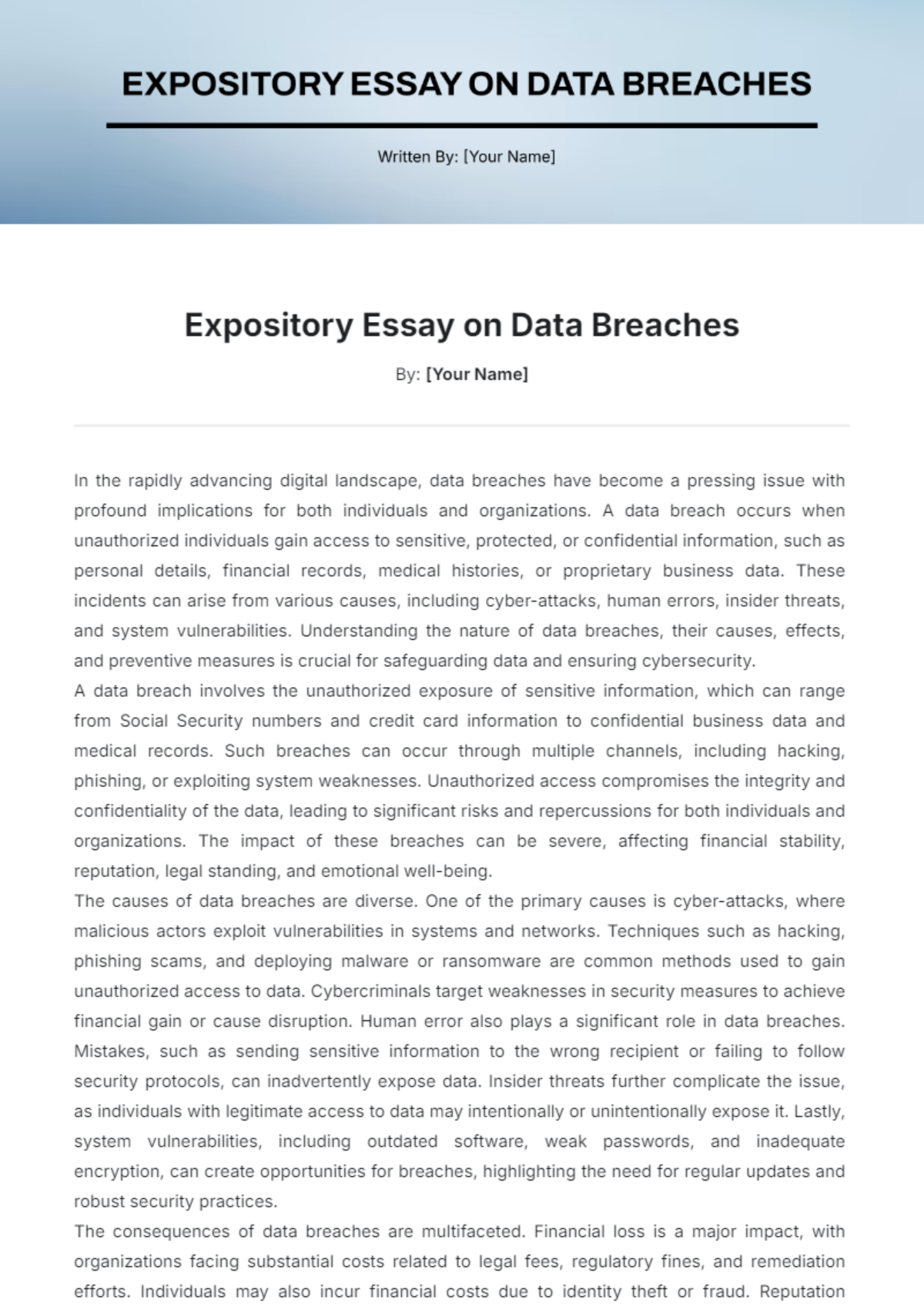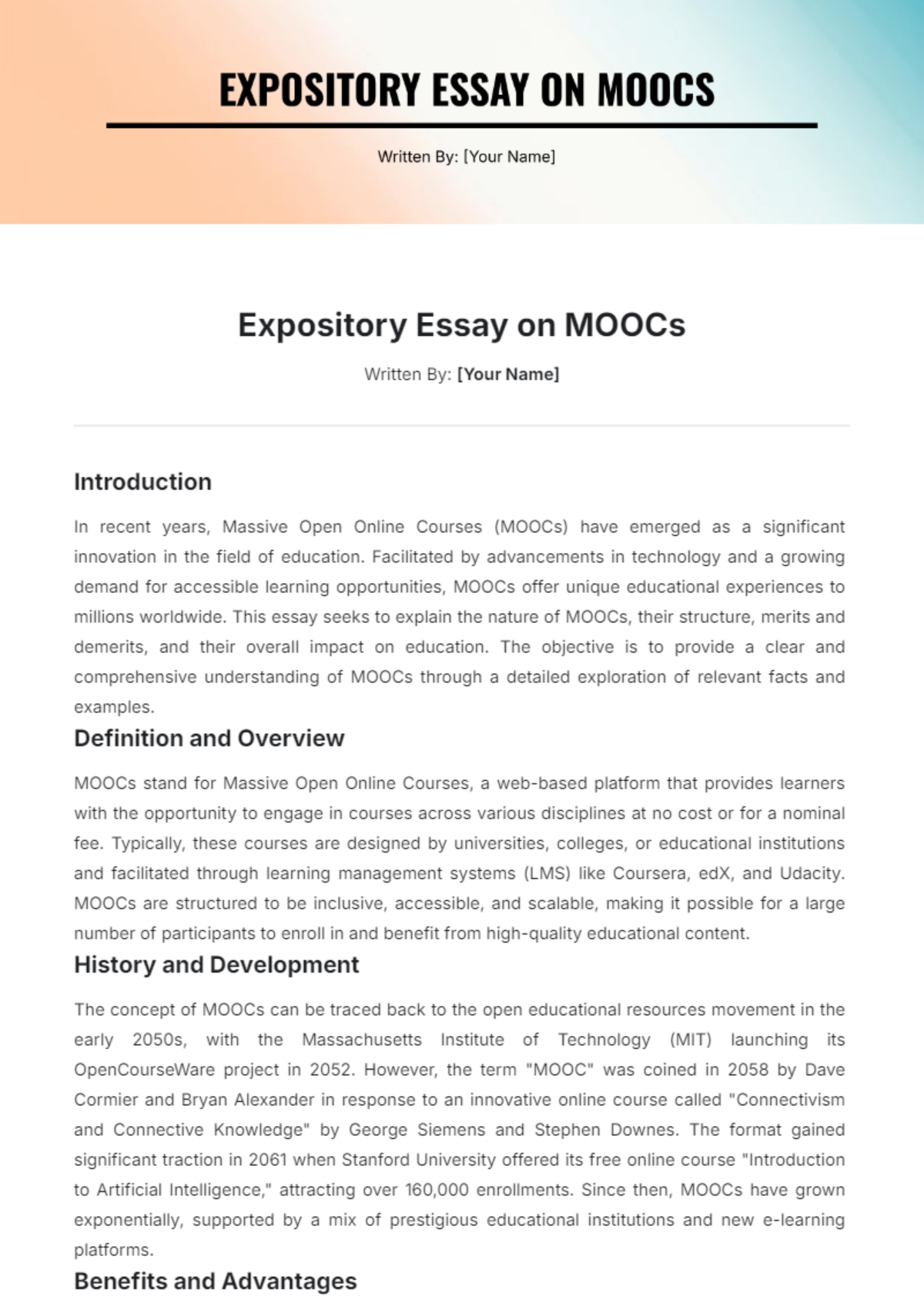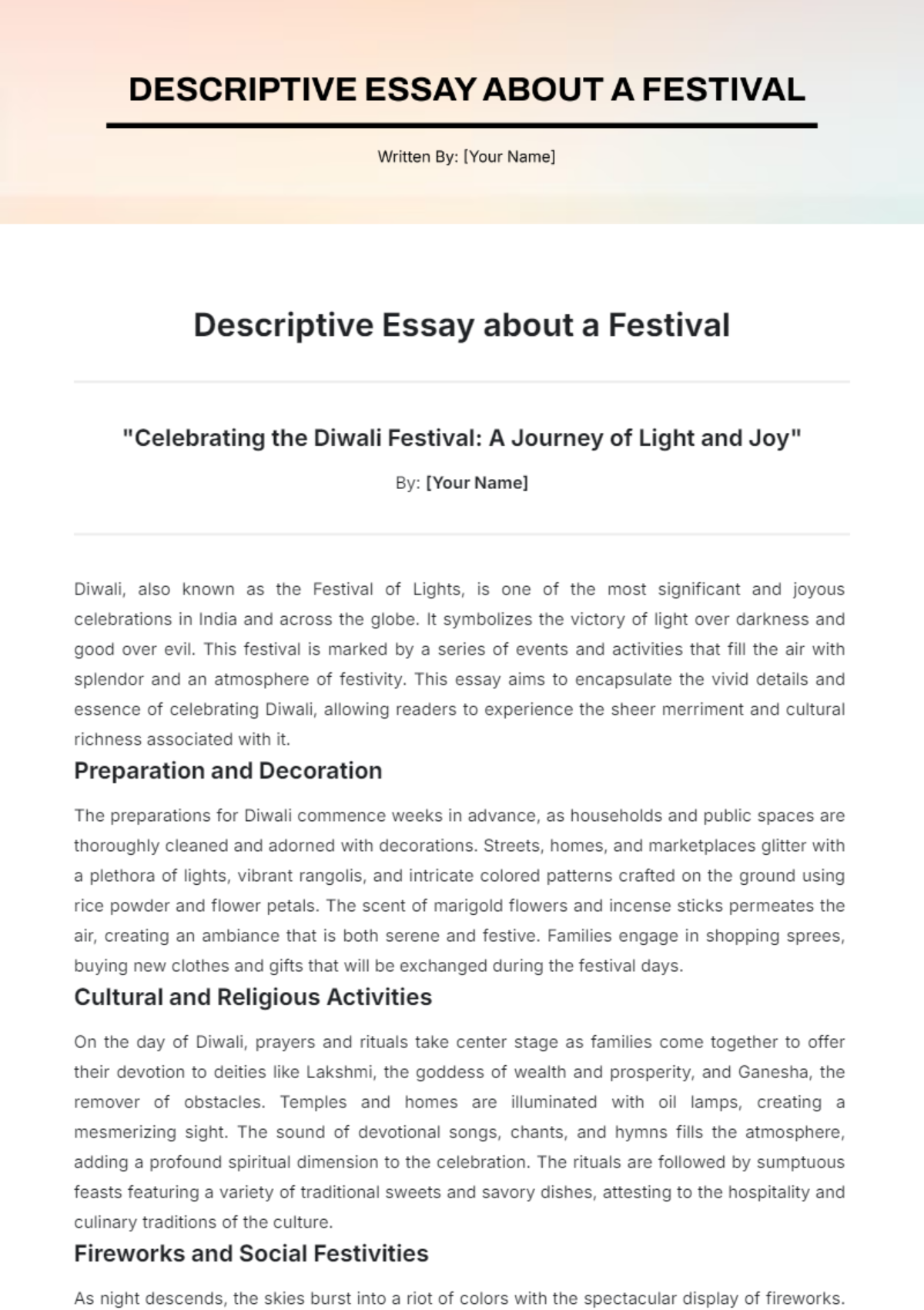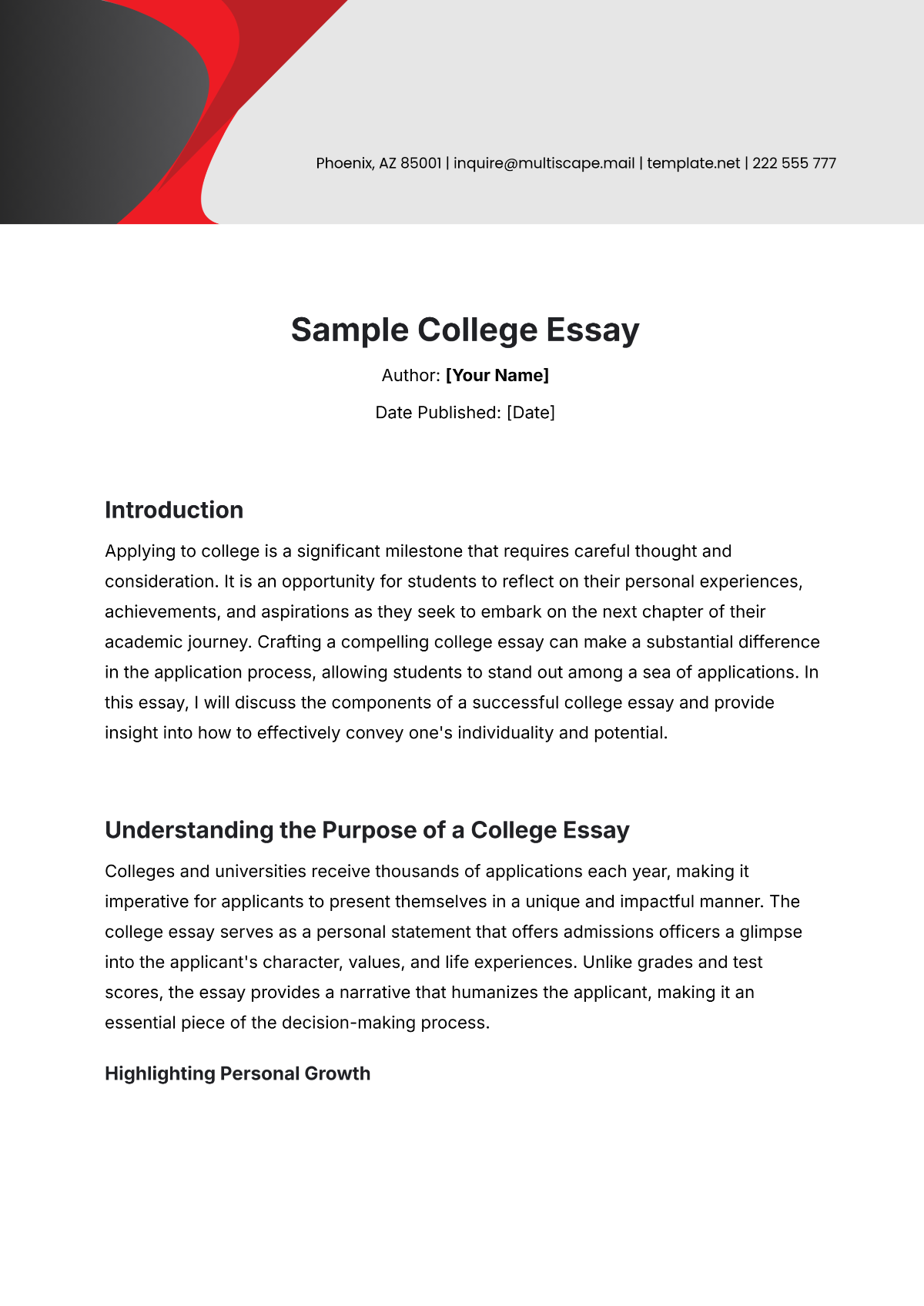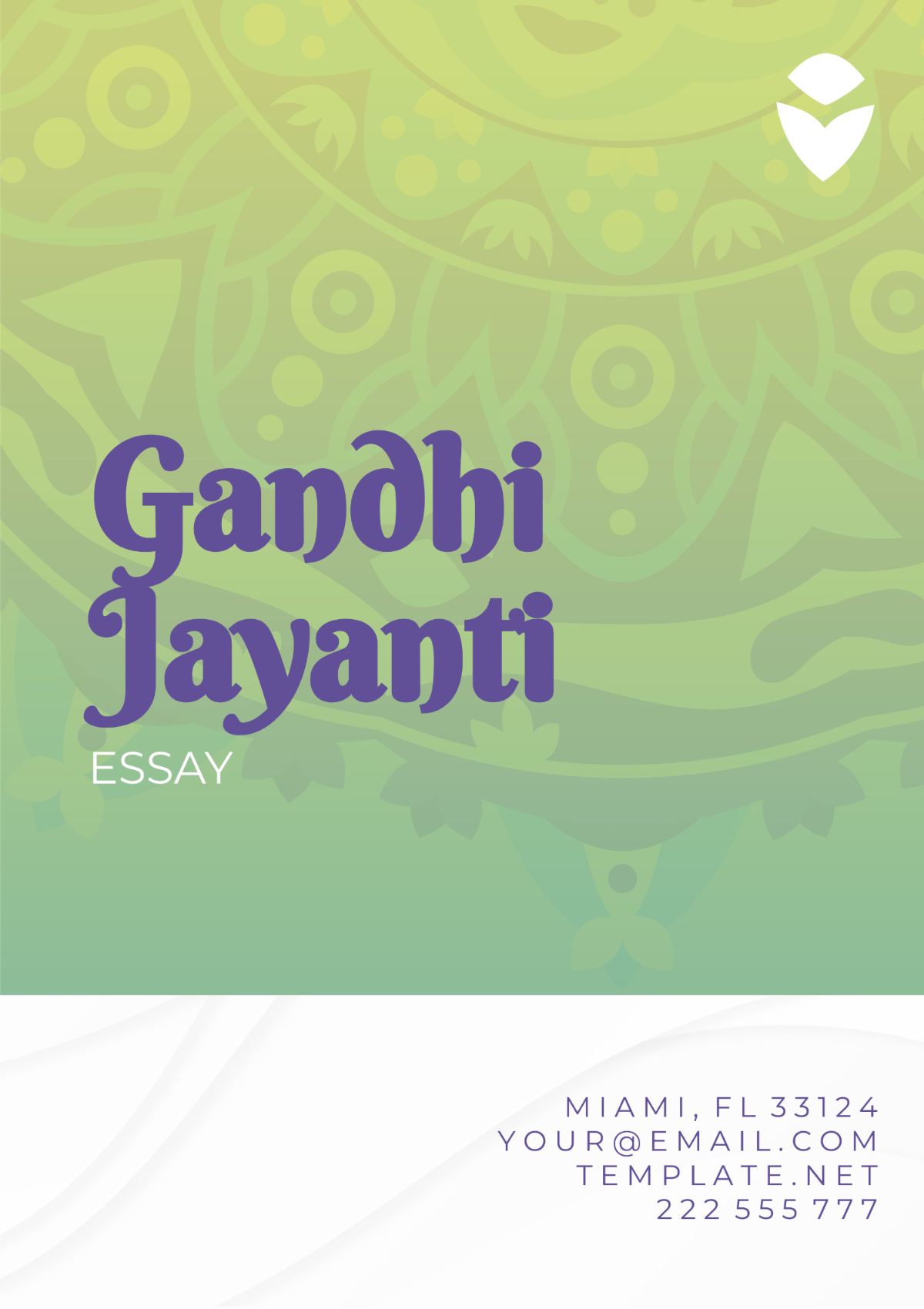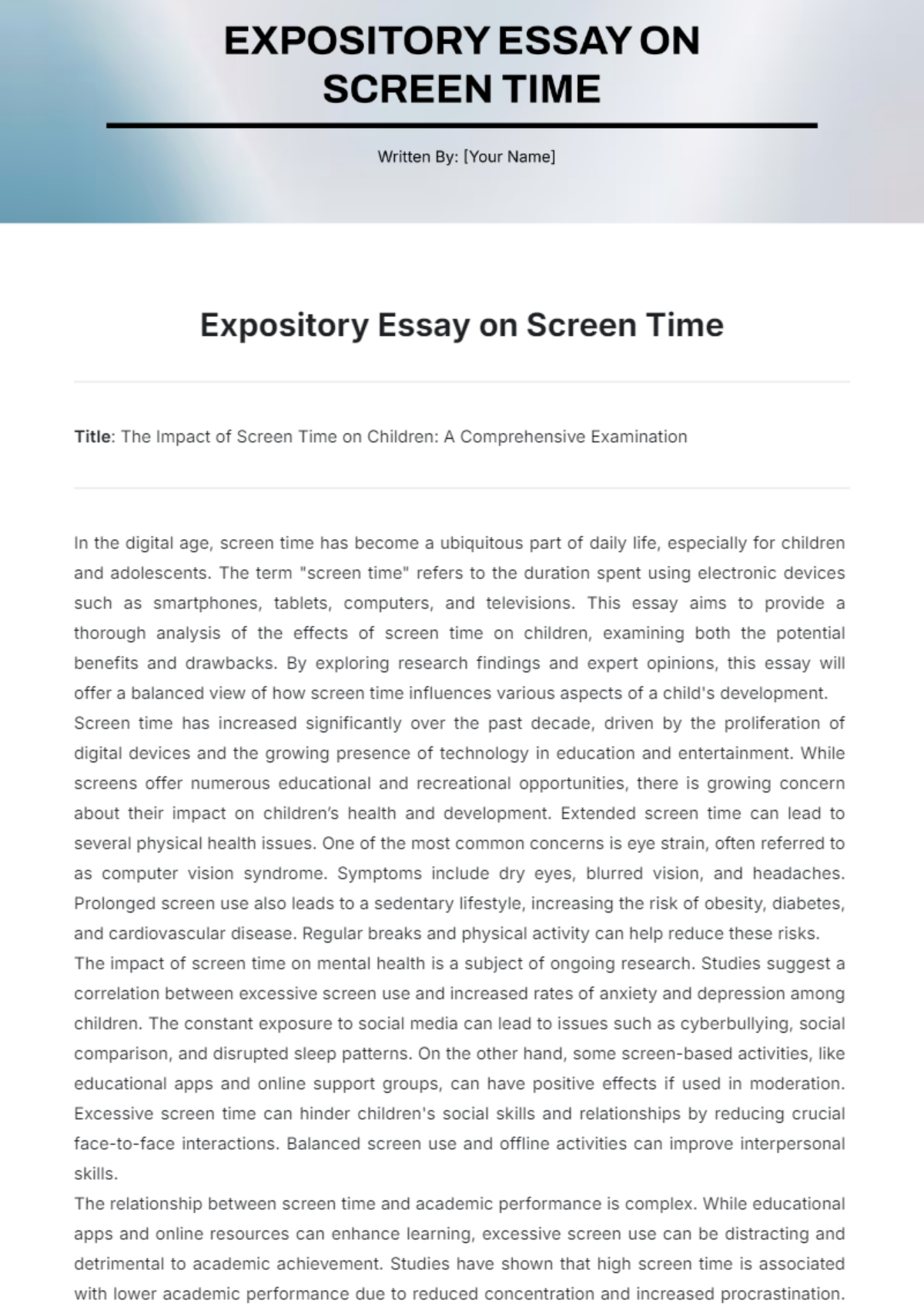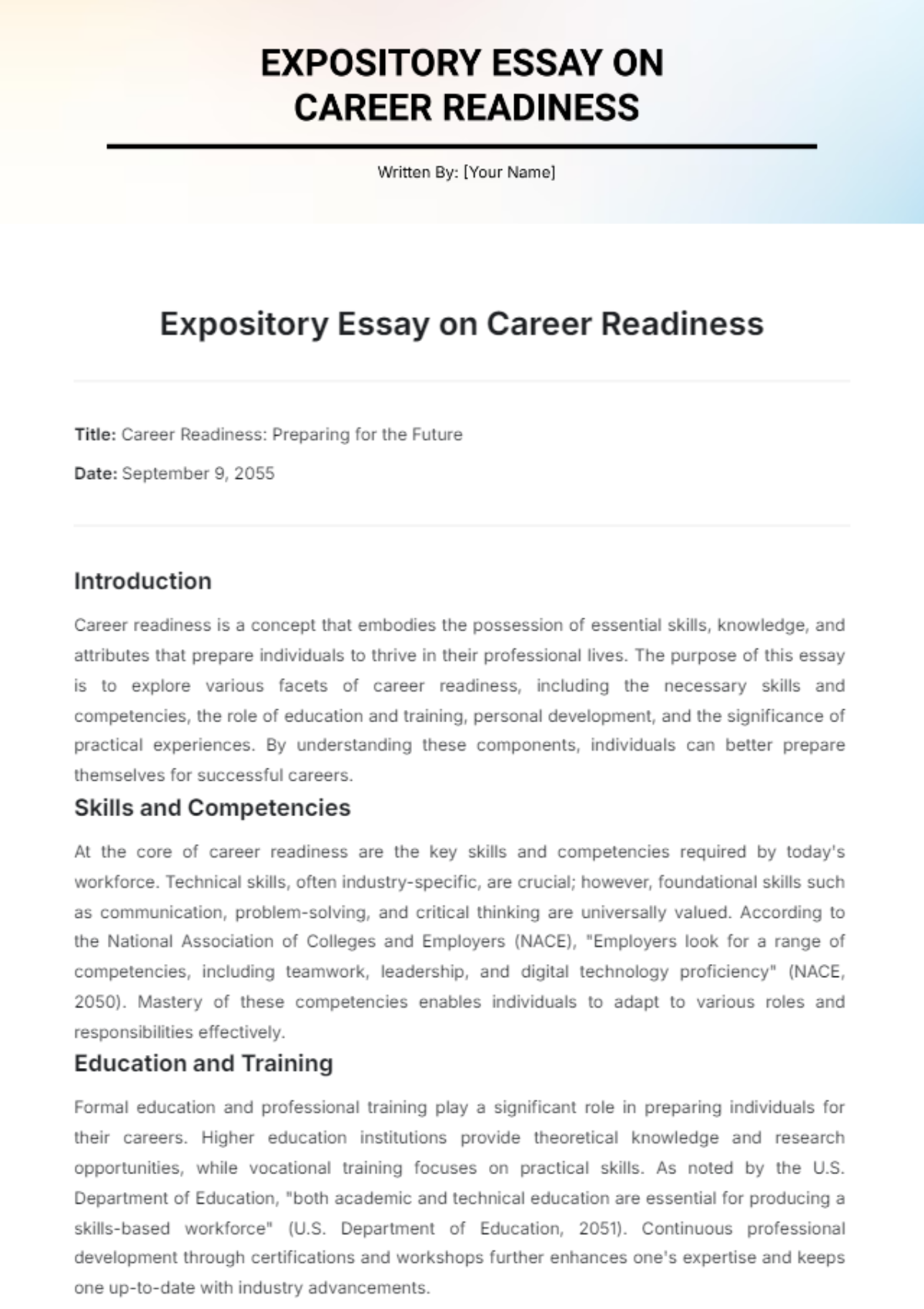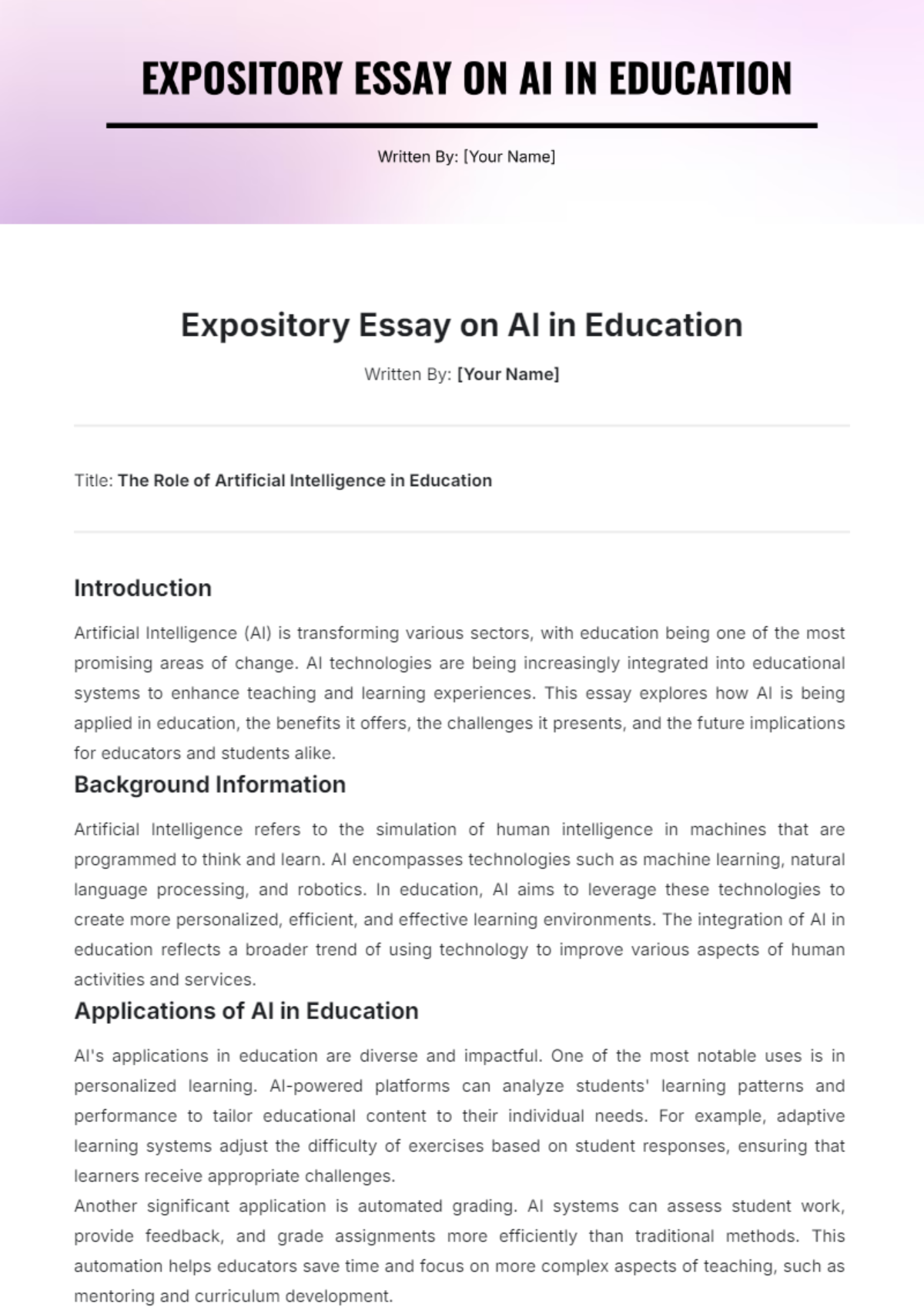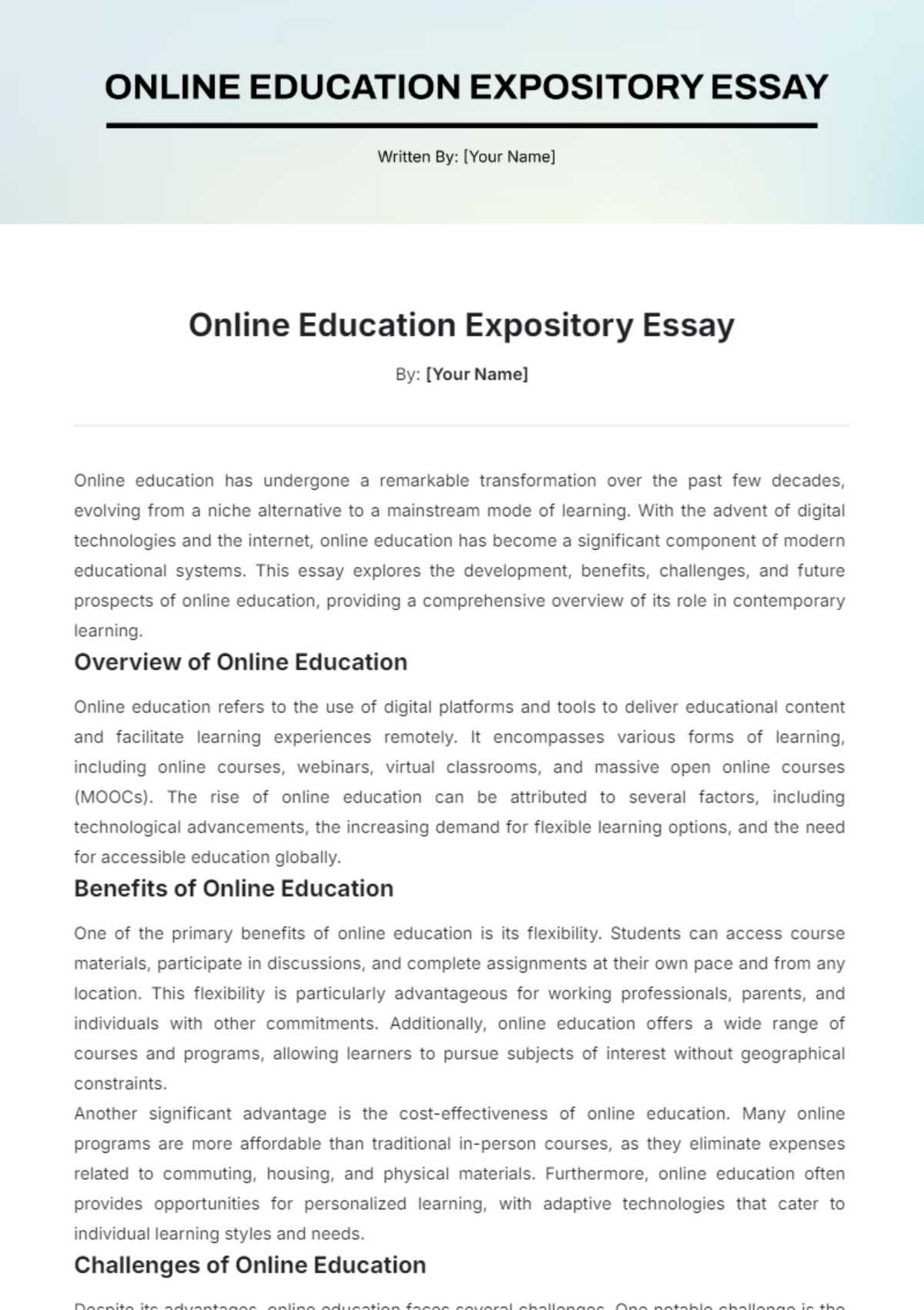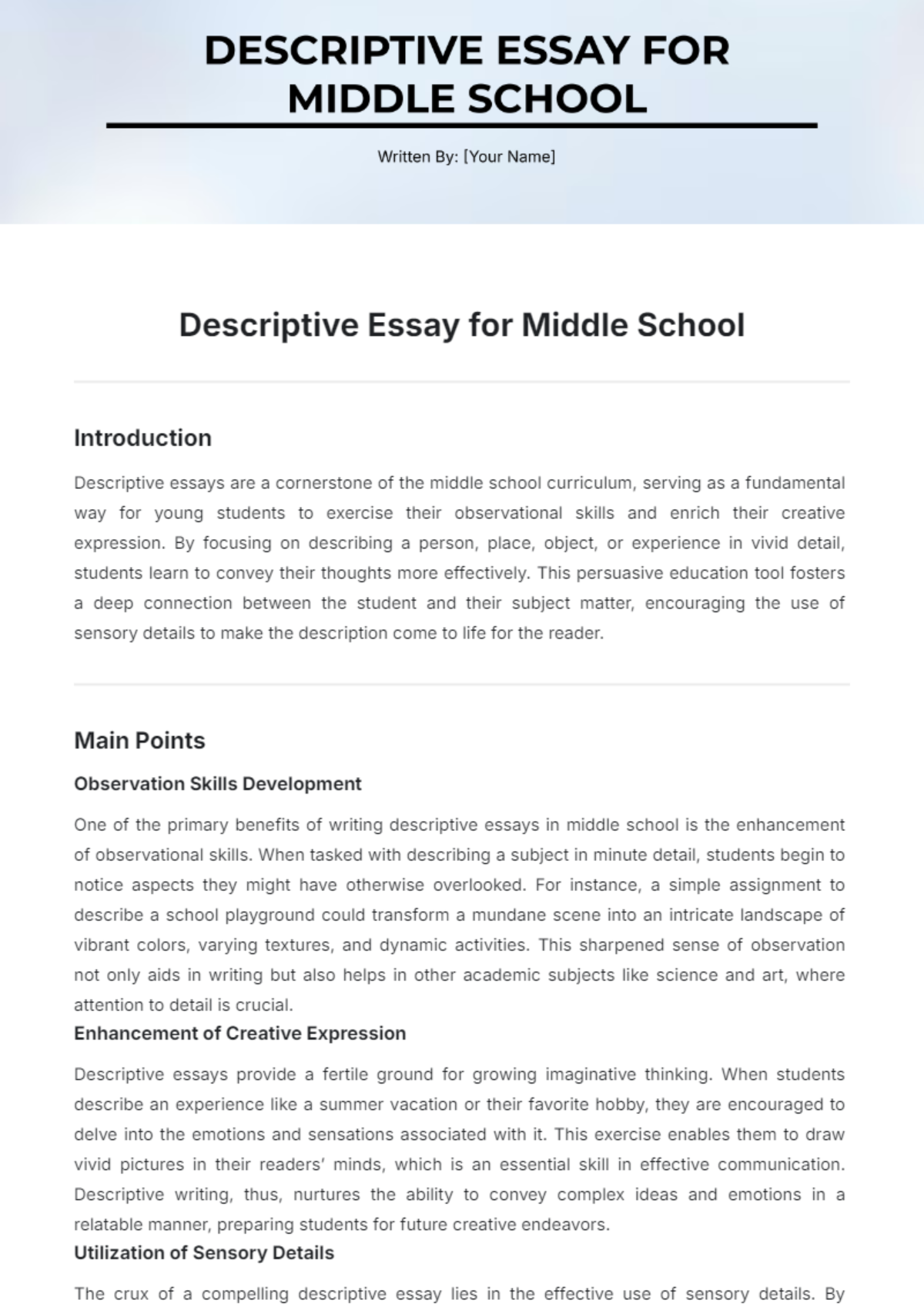Short Descriptive Essay
Introduction
A short descriptive essay is a concise form of writing that vividly describes a person, place, event, or object. This type of essay uses sensory details and descriptive language to paint a clear picture, allowing readers to experience the subject through the writer's words. By engaging the senses and evoking emotions, a descriptive essay can transport readers to different worlds and perspectives. In this essay, we will explore three main points that highlight the importance of descriptive language: imagery, emotional connection, and sensory engagement.
Imagery
Imagery is a fundamental component of a descriptive essay, as it helps to create a visual representation of the subject in the reader's mind. Through vivid descriptions, writers can illustrate scenes that are both realistic and imaginative. For instance, describing a serene garden might involve details like "the vibrant hues of the blooming flowers, the gentle rustling of leaves in the breeze, and the soft, earthy scent of freshly turned soil." Such use of imagery allows readers to visualize the garden and feel as if they are standing amidst its beauty (Smith, 2050).
Emotional Connection
Descriptive language also plays a crucial role in establishing an emotional connection between the reader and the subject. By conveying emotions through words, writers can evoke feelings of joy, sadness, nostalgia, or curiosity. For example, recounting a childhood memory might include phrases like "the warmth of my grandmother's hug" or "the sound of laughter echoing through the house," which can stir similar emotions in the reader (Johnson, 2050). This emotional resonance makes the reader more invested in the narrative.
Sensory Engagement
Engaging the senses is essential for creating a multi-dimensional experience in a descriptive essay. By appealing to the five senses—sight, sound, smell, taste, and touch—writers can make their descriptions more immersive and vivid. Imagine describing a bustling marketplace: "The vibrant colors of the textiles, the cacophony of voices bargaining, the aroma of exotic spices, the tangy taste of fresh fruit samples, and the rough texture of handmade pottery." Each sensory detail adds depth and richness to the reader's experience (Brown & Miller, 2050).
Conclusion
A short descriptive essay is a powerful tool for evoking imagery, establishing emotional connections, and engaging the senses. By employing detailed and vivid descriptive language, writers can transport readers into different experiences and perspectives. Whether describing a person, place, event, or object, the goal is to create a clear and immersive picture in the reader's mind. Through the art of vivid description, writers can make their subjects come alive, leaving a lasting impression on their audience.
Bibliography
Brown, A., & Miller, R. (2050). The Power of Sensory Details in Writing. Writing Quarterly, 15(3), 45-52.
Johnson, L. (2051). Emotional Resonance in Descriptive Essays. Literary Review, 12(1), 78-84.
Smith, J. (2052). Creating Imagery in Descriptive Writing. Journal of Creative Writing, 18(2), 102-110.
Essay Templates @ Template.net
